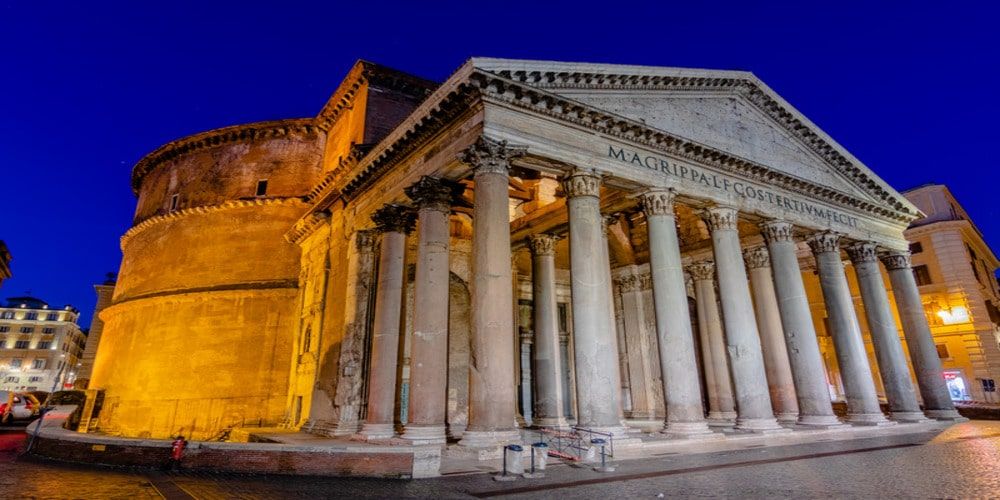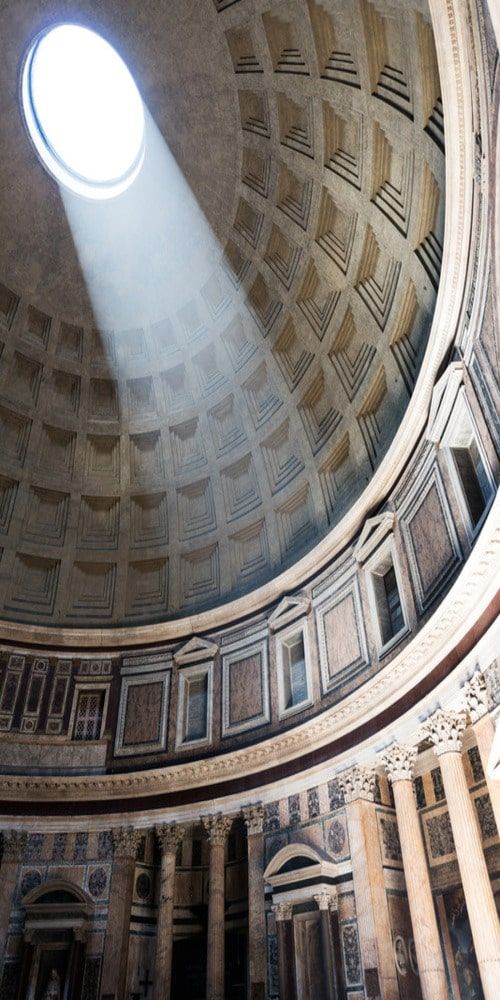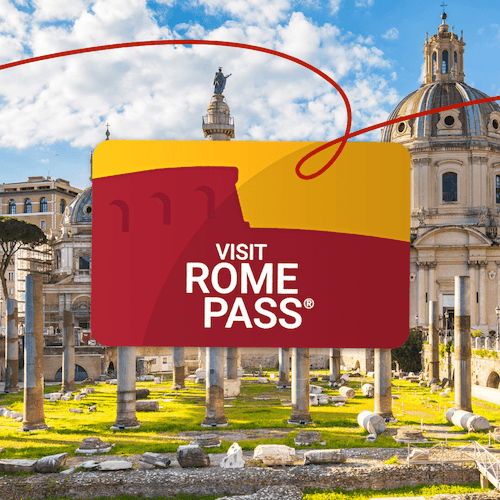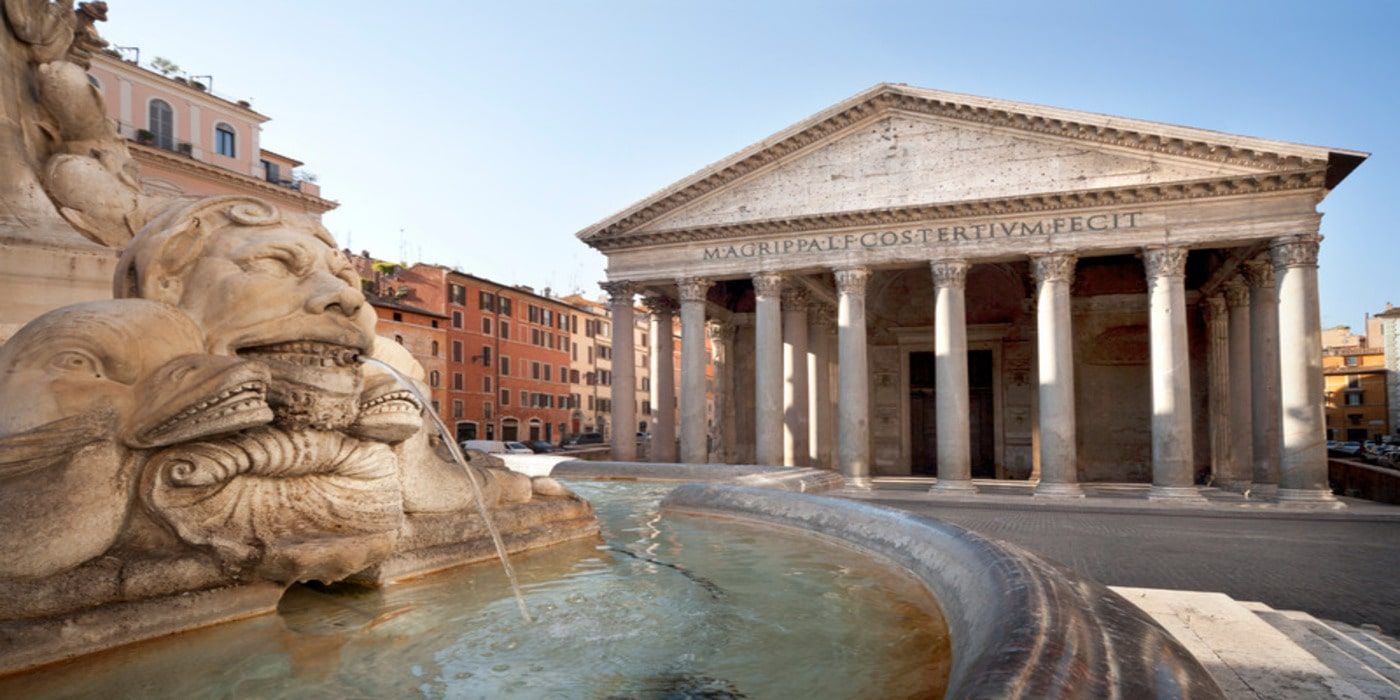To visit all the wonders of the Eternal City a lifetime would not be enough, but it is true that you have to start somewhere. And so, if you decide to start exploring Rome with the classic itinerary of the Old Town, from the Colosseum to the Piazza di Spagna, don't forget one of the highlights of this area: the Pantheon.
This immortal temple in the heart of the capital - now not only a monument but also a church - is actually very easy to find during your walks in the heart of the city. Here we tell you how to visit the Pantheon easily and everything you need to know about this charming and legendary place.
Explore the wonders of Rome with Visit Rome Pass
Visit the Pantheon,the temple of the Eternal City
Walking through the alleys of Rome means literally walking through history, crossing the centuries meter by meter, and for a complete overview the Pantheon is not to be missed. If you are in the city center of Rome, you will be enchanted by this symbol of the glories of the ancient empire with its imposing structure and history.
But before finding out how to get to the Pantheon, it's time to know a little more about this iconic monument.
It has always been a destination for millions of tourists from all over the world, "the most beautiful remains of Roman antiquity," as Stendhal called it, was built in 27 B.C. by Marcus Vipsanius Agrippa, son-in-law and aide of the first emperor Augustus, and, as indicated by its name (from the Greek "all the gods"), was conceived as a temple to pay homage to the 7 global gods and, of course, to celebrate Augustan Rome. But the shape it still has today, with a circular plan and an 8-columned pronaos (8 more on the side), is due to changes made by Emperor Hadrian, who nevertheless dedicated the inscription on the pediment to Agrippa, recognizing his paternity.
The architectural features of the building are several, first and foremost the striking oculus crowning the dome, a hole about 9 m wide that represents a kind of "window" through which the divine gaze could penetrate the stone but concretely acted as a solar clock: the perspective of the rays changes every day and marks its succession like a calendar.
Another special feature is the small moat that surrounds its perimeter: according to the legend, it was digged by devil himself with his hooves, running around the basilica in a rage because of the alchemist Pietro Barliario, who, regretting having sold his soul to him in exchange for the Book of the Command of the Evil Arts, had taken refuge inside the structure, escaping him.
Today, as well as being the tomb of great personalities, (such as Raffaello Sanzio, King Vittorio Emanuele II and his son Umberto I) it is one of the most visited tourist spots and a place of worship where mass is celebrated, since in Christian times it was converted to a sacred building and named Santa Maria ad Martyers. In 609, actually, Pope Boniface IV had the remains of anonymous martyrs transferred and buried here, in order to "compensate" in some way for the dedication to the host of pagan gods and turn it into a place of religious importance.
In short, we are talking about an original and meaningful work of art that is unique and absolutely worthy of a visit.
Book your hotel near the PantheonHow to get to the Pantheon: information for your visit
The Pantheon is located in Piazza della Rotonda in the center of Rome, not far from Via del Corso, the main avenue and shopping street, and particularly from Montecitorio, the seat of Parliament, so it is very easy to walk to from the various points of interest in this area.
Since last September, admission to the surface part of the building, which was previously free, costs 5 euros (reduced to 2 euros for 18-25 year olds and free under 18), while tickets with an audio guide, on the other hand, have various price ranges depending on the type and must be booked in advance.
If you decide on an unplanned visit, arm yourself with an umbrella or a bottle of water, depending on the season, and be prepared to stand in a long line, as this is almost the rule at the Pantheon; for this reason, we recommend to book a tour with a "skip the line" option and take advantage of priority entry. Also add an audio guide to discover what lies behind every little detail of this extraordinary building or book a tour with an expert guide.
Also, remember to dress appropriately, covering your shoulders and knees, as this is nonetheless a sacred building.
Access is daily from 9 a.m. to 7 p.m., with last admission at 6:30 p.m.
Book a guided tourAudio guide tickets and guided tours

To visit the Pantheon in the best way, you cannot miss an audio guide. The one for the temple of the gods is very special because each step you take will be accompanied by Emperor Hadrian, Pope Boniface IV, Raphael, Margaret of Savoy and the Rector of the Chapter of Santa Maria ad Martyres Monsignor Daniele Micheletti. Apart from the latter, the other characters are voiced by actors like Sergio Rubini (Hadrian), Alessandro Haber (Boniface IV), Daniele Parisi (Raphael), and Giusi Cataldo (Margaret of Savoy) and are accompanied by Antonio Fresa's original compositions performed and recorded with the Orchestra of Teatro La Fenice, featuring Amalia Gré, Luca Gemma and the Choir of the Insigne Cappella Musicale del Pantheon. The recording lasts 50 minutes.
The ticket grants the right to skip the queue and can be picked up at the Basilica of San Lorenzo in Lucina, a few minutes away from the Pantheon, while the audio guide is available at the Reception Desk inside. You can also add a printed guidebook to take with you.
Finally, you can book a tour with a specialized guide lasting about 30 minutes.
Book your tour and skip the lineVisit the Pantheon: book your admission

Now that you know all the useful details about how to visit the Pantheon, with or without an audio guide, you can finally carve out a few hours of your time for an exclusive visit, discovering this imposing and mysterious place and its particular structure.
There would be so much more to say about the Pantheon and all the stories it is able to tell but we don't want to take away your enjoyment of experiencing its charm with your own eyes.
About the author
Written on 27/02/2024




Denise Penna
Among the most beloved and popular symbols of Rome, the temple of the gods is an essential stop: here is how to visit to the Pantheon properly.